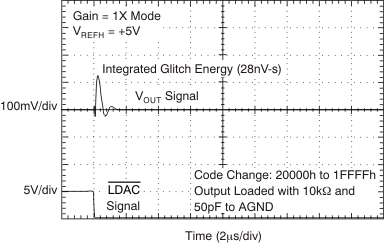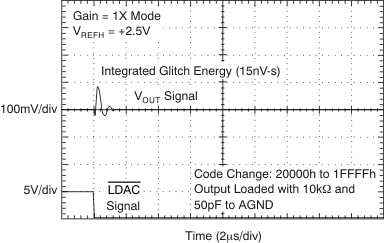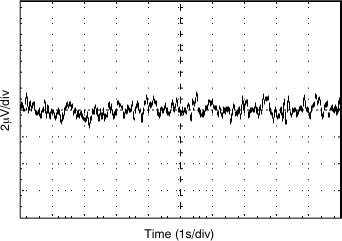SBAS438C May 2008 – November 2019 DAC9881
PRODUCTION DATA.
- 1 Features
- 2 Applications
- 3 Description
- 4 Revision History
- 5 Pin Configuration and Functions
-
6 Specifications
- 6.1 Absolute Maximum Ratings
- 6.2 ESD Ratings
- 6.3 Recommended Operating Conditions
- 6.4 Thermal Information
- 6.5 Electrical Characteristics: AVDD = 5 V
- 6.6 Electrical Characteristics: AVDD = 2.7 V
- 6.7 Timing Requirements—Standalone Operation Without SDO
- 6.8 Timing Requirements—Standalone Operation With SDO and Daisy-Chain Mode
- 6.9 Typical Characteristics: AVDD = 5 V
- 6.10 Typical Characteristics: AVDD = 2.7 V
-
7 Detailed Description
- 7.1 Overview
- 7.2 Functional Block Diagram
- 7.3 Feature Description
- 7.4 Device Functional Modes
- 8 Application and Implementation
- 9 Power Supply Recommendations
- 10Layout
- 11Device and Documentation Support
- 12Mechanical, Packaging, and Orderable Information
Package Options
Mechanical Data (Package|Pins)
- RGE|24
Thermal pad, mechanical data (Package|Pins)
- RGE|24
Orderable Information
6.9 Typical Characteristics: AVDD = 5 V
at TA = 25°C, VREFH = 5 V, VREFL = 0 V, and gain = 1X mode (unless otherwise noted)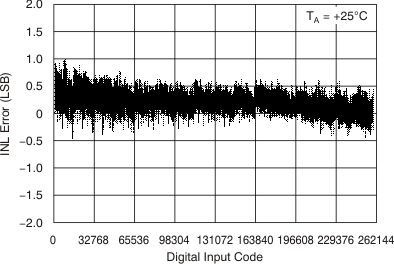
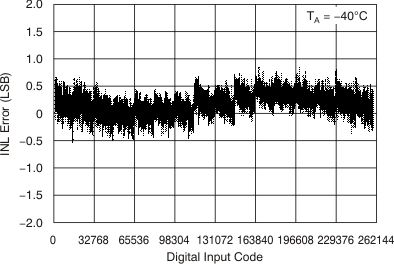
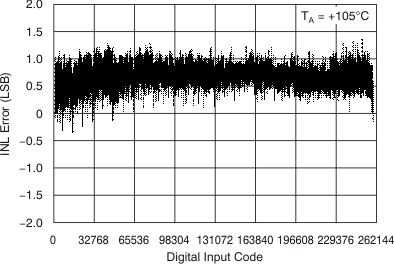
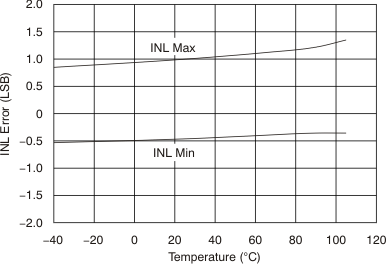
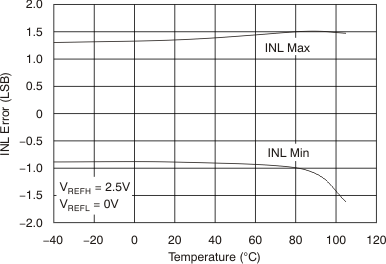
| Gain = 2X mode |
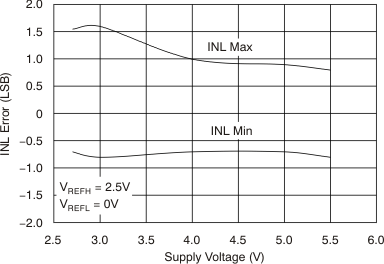
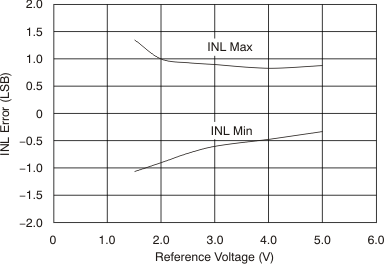
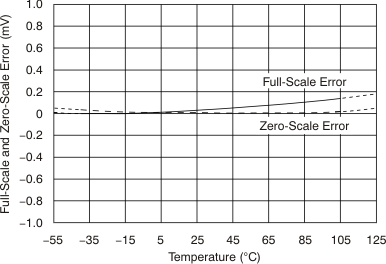
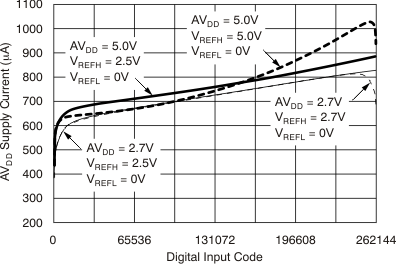
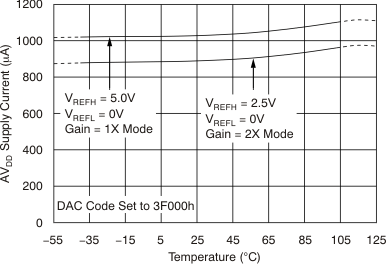
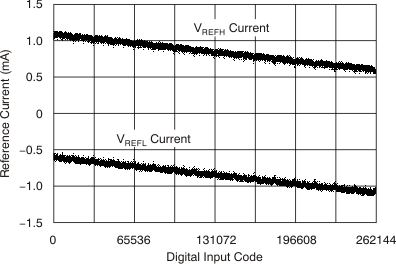
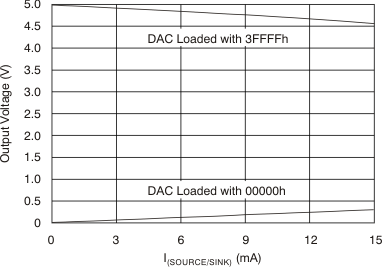
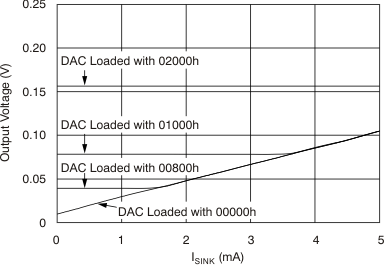
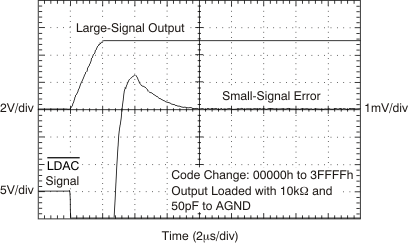
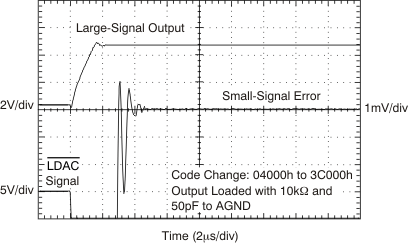
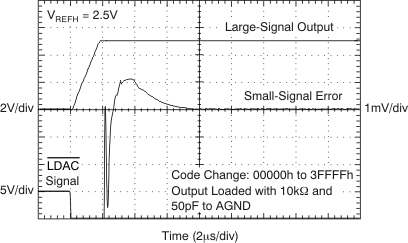
| Gain = 2X mode |
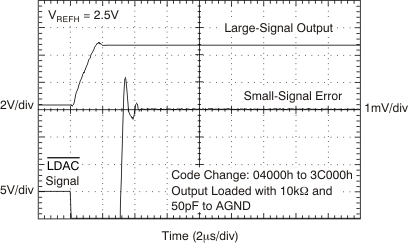
| Gain = 2X mode |
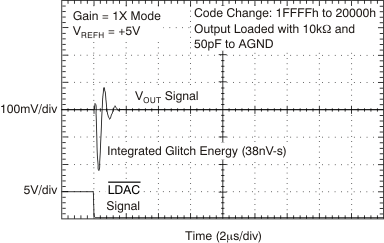
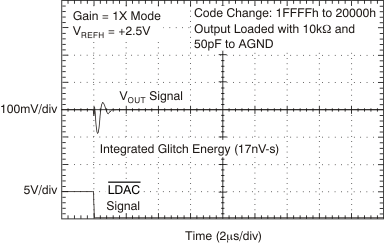
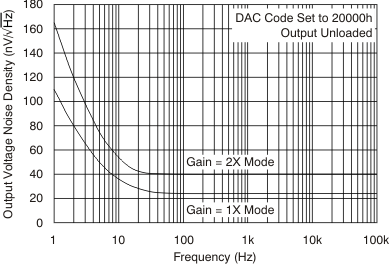
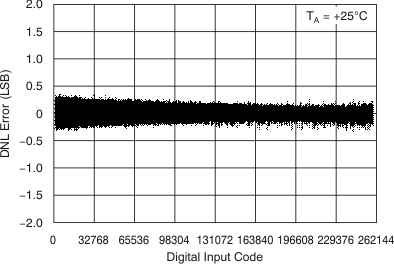
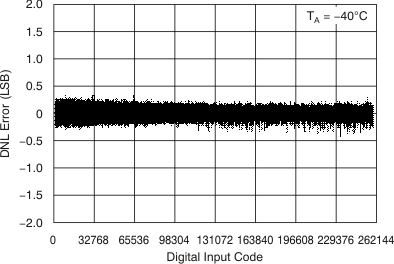
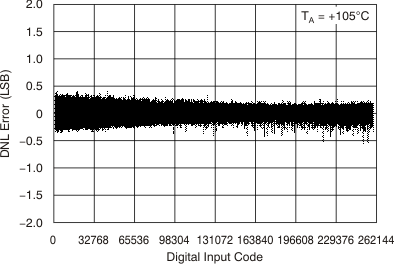
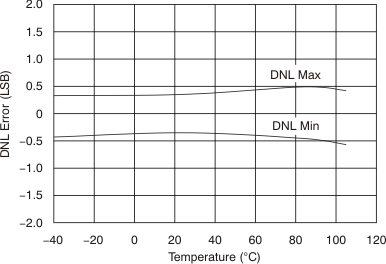
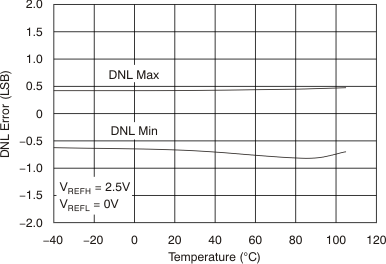
| Gain = 2X mode |
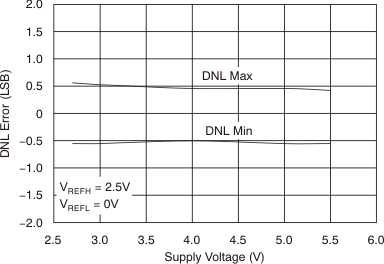
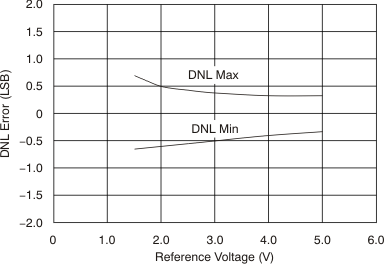
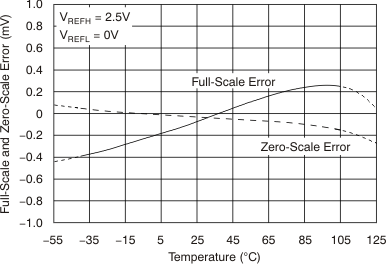
| Gain = 2X mode |
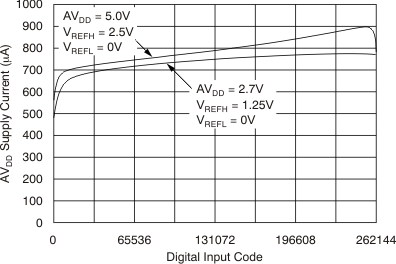
| Gain = 2X mode |
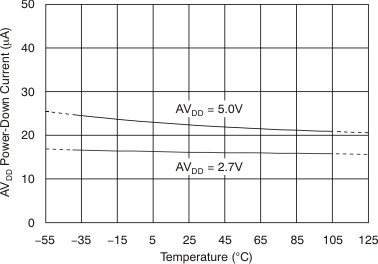
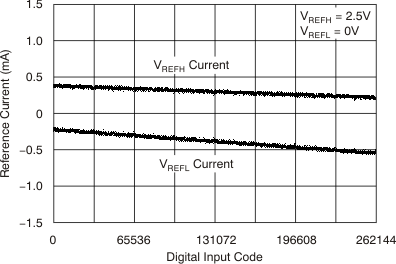
| Gain = 2X mode |
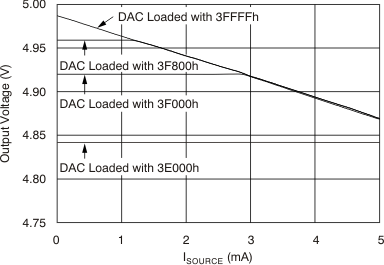
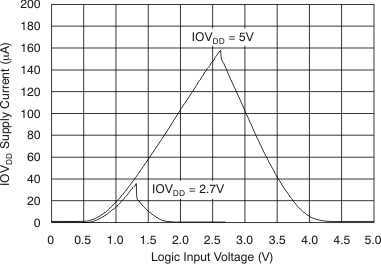
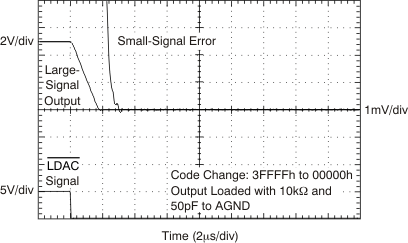
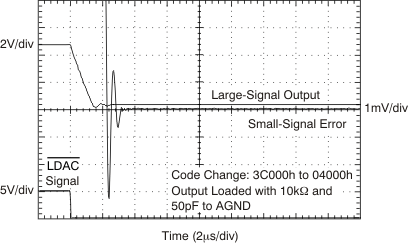
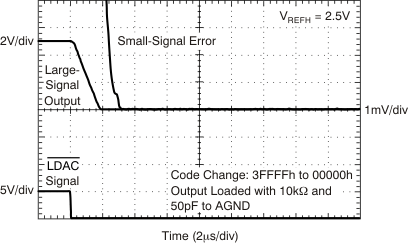
| Gain = 2X mode |
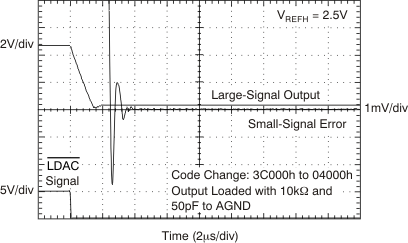
| Gain = 2X mode |
